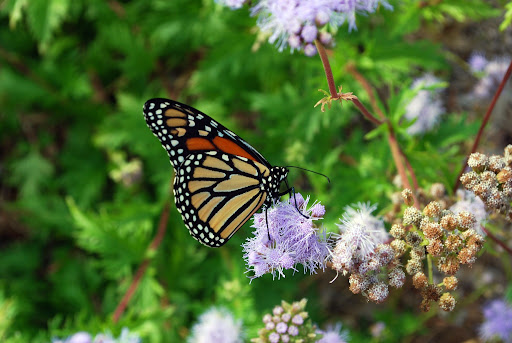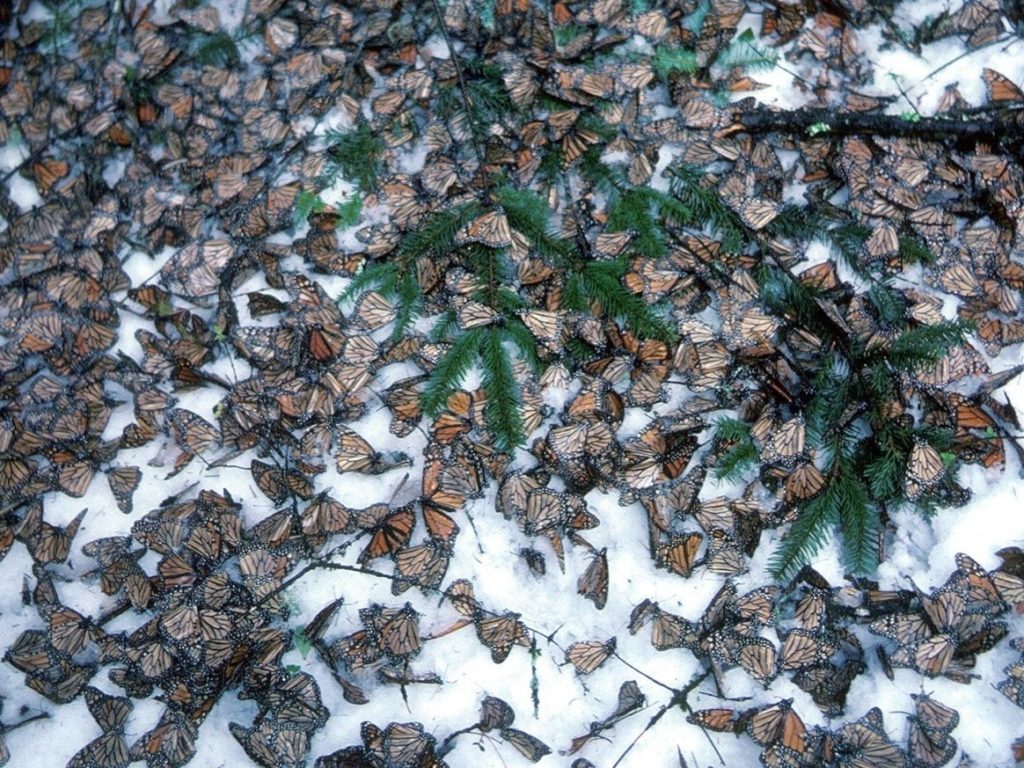
In a recent article, scientists, many from Michigan State, established how monarch populations respond to temperature and moisture. The findings indicated that changes in the climate, particularly increasing temperatures, were likely to reduce monarch numbers (SciTechDaily). Clearly, we can add climate change as well as habitat loss to our concerns about the future of the monarch migration. While as individuals it is difficult to affect climate change, we can reduce habitat loss and increase habitat restoration. As the work of Farmers for Monarchs has shown, the agricultural community should continue to be a part of the solution for supporting pollinators and implementing climate-smart practices.
When examining the annual cycle of the monarch butterfly, it becomes clear why climate change would be such a strong factor influencing the status of the population. It is not just about the types of resources that monarchs need, or the abundance, but the timing of those resources is also critical. The migratory generation of monarchs that departs for their overwintering grounds each fall relies on late season wildflowers to fuel their flight. Overwintering monarchs require “Goldilocks” type conditions – not too hot, not too cold – to survive the winter without freezing and without using too much of their energy reserve. In their final attempts to get the next generation off to a good start, the overwintering generation moves north and relies on abundant spring milkweed that is well-timed with their arrival in the southern U.S. As subsequent generations move north following their milkweed host plants, weather conditions in different geographies might delay them, or push them ahead too quickly. Summer breeding generations need abundant milkweed and nectar resources to help build a robust migratory generation come fall, and then the cycle begins again.
With this multi-generational migration cycle, you can see how disrupting just one link in this chain can be detrimental to the success of subsequent generations, and thereby the entire population. For example, this year provided a scare with a major early season winter event in Texas that knocked back the plant vegetation, bringing speculation about whether or not native milkweeds would have enough time to bounce back before the monarchs arrived. Luckily, they did – this time. Severe drought conditions across the western landscape are also cause for concern. It is difficult to grow plants – crops or native plants – without water.

While the goal remains restoring and protecting habitat for monarchs and other pollinators, it is important to consider the role of climate change in monarch population decline (or success). Similar to crop production, monarch populations rely on predictable weather patterns. In different regions we generally know how much precipitation to expect. In today’s changing climate, severe weather events have become more frequent and unpredictable. Drought, heat, high winds, or torrential precipitation affect crops as well as native plants that support biodiversity. The optimum temperature for monarch development is 84F while the optimum temperature for corn and soybean growth is about 85F. That said, corn and soybeans are more sensitive to soil moisture than monarchs. The primary point being that what is good for soy and corn is generally good for monarchs and the converse.
Although it can be difficult to accurately estimate the magnitude of the effects of climate change on monarch populations, the strategy to support this critical species is the same as it has always been: develop widespread habitat that contain diverse plant species. More habitat simply makes it easier for monarchs to find suitable plants on which to lay eggs or find nectar or a mate. Additionally, pollinator plantings on non-crop lands can act as a carbon sink.
The monarch migration is truly a miracle, and it is fragile. Climate change will certainly throw that delicate cycle out of balance. Increasing habitat is still the primary means of supporting and restoring the population. As the work of Farmers for Monarchs has shown, the agricultural community has a great opportunity to be a part of the solution.
